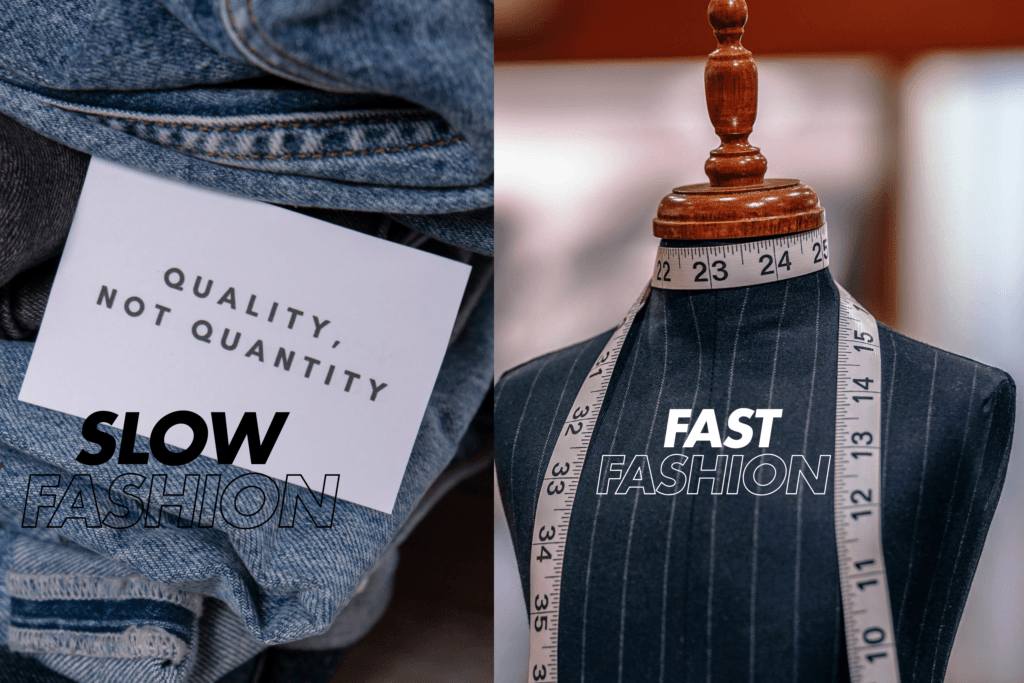
10 Sustainable Fashion Tips to Transform Your Wardrobe
Sustainable fashion is not just a trend; it’s a lifestyle that is beneficial to the world, your wallet, and of course, your style. So, if you have it in mind to dress green but not compromise your style-dramatic design, you are at the right place. Let us get straight into 10 practical sustainable fashion tips that can change how you dress and consume fashion.
What Is Sustainable Fashion?
Fashion that is sustainable is a design for garments, adornments, and shoes with less environmental impact and more ethical practices. It aims on minimizing waste, pollution, and exploitation for a greener and just fashion industry.
It includes everything from production to disposal. Materials that are eco-friendly belong among fair labor practices; on top of those, they include personal responsibility to the public embodied in those conditions. It is essentially in the sustainable fashion tips, thinking about how our clothes choices affect the planet and people.
Related story
Why is sustainable fashion important?
Fashion is perhaps the most polluting among all industries in the world by way of emissions in atmosphere and landfill wastes. There are ways through which you can adapt to a sustainable life course and such changes will definitely contribute in minimizing your welfare footprint through promoting fair trade of labor and financially saving.
Sustainable fashion goes beyond the ecology and ethical impact of environment. It gives you a chance to adopt a unique and thoughtful style. Rather than being swept away into the latest trend, you build a wardrobe that really reflects yourself and your values.
Tip 1: Invest in quality not in in quantity.

Although it is attractive to spend on inexpensive fashionable apparel, they usually break quickly and only add to the waste. Buy high-quality clothes that are going to be timeless and durable. Quality clothing tends to last longer and hence saves you some money in the long run, though they may be a bit more upfront.
- Why it matters : Eliminates overproduction and waste.
- How to start: Look for clothes that can be reused in a variety of ways and that are sturdy and not easily damaged.
Tip 2: Embrace Second-Hand Shopping

Scavenging second-hand is a treasure hunt that’s inside your wallet and outside the planet. There is more, waiting in thrift, vintage, and online resale niches, for everything from unusual accolades to personal mementos just waiting for their second life.
- Why it matters : It prevents clothing from ending up in landfills and cheapens or makes obsolete the demand for the production of ‘new’ garments.
- How to start: Check out neighborhood thrift stores or platforms such as Poshmark and Depop. You might stumble upon a true gem that can enhance your wardrobe.
Tip 3: Organize and Audit Your Wardrobe

A good assessment should be done of anything that you want to purchase, before unlocking a new purchase line. You have to organize your closet organizing to find treasures usually hidden in disorganization and will help identify what’s actually missing.
- Why it matters : Prevents unnecessary purchases and helps you appreciate what you have.
- How to start: By sorting the wardrobe into the season and type, and then mixing the pieces it creates into a capsule collection, you can easily put together a wonderful collection along with the ones you love.
Related story
Tip 4: Choose Eco-Friendly Fabrics

More than anything else, it’s the materials in your clothes that matter. Choose natural and biodegradable fabrics: organic cotton and hemp, as well as bamboo; or go innovative, like recycled polyester.
- Why it matters : Lessens resource-demanding processes along with microplastic pollution.
- How to start: Understand the tags and investigate brands that go for environment friendly fabrics.
Tip 5: Support Ethical Brands
Not all brands are equal. Supporting ethical brands gives you the sense that your money goes to companies who care about sustainability and fair labor practices.
- Why it matters : Advocates greater openness and better practice in the fashion sector.
- How to start: Search for certifications such as Fair Trade, GOTS (Global Organic Textile Standard), or B-Corp labels.
Tip 6: Repair, Don't replace

Do not simply throw out the clothes at the first signs of rough handling. You can learn basic repair skills or go to a tailor to prolong the life of items. Make your clothes life longer , repair and reuse it to bring a creative fashion idea.
- Why it matters : Reduces waste and saves money.
- How to start: A small sewing kit should be purchased for minor repairs, or you should look for local sewing repair workshops.
Tip 7: Rent your clothes on occasions
Formal events often lead to single-use outfits. Renting clothing for weddings, galas, or parties is a stylish and sustainable alternative.
- Why it matters : Decreases waste from rarely worn items.
- How to start: For high-quality rent, avail the services by either rent the runway or local rental shops.
Tip 8: Learn DIY Fashion Hacks
Here are things do-it-yourself. Give your wardrobe a thorough revitalization while doing away with any waste. Change old clothes into things newly made, or make little alterations to remake the look.
- Why it matters : Improves our creative ideas.
- How to start: try dying them in tie-dye, put patches on them, or change the hem of the garment.
Tip 9: Avoid Fast Fashion
Fast fashion may be cheap, but it comes at a high cost to the environment and workers. Boycotting fast fashion brands is one of the most impactful choices you can make.
- Why it matters : Reduces demand for exploitative and unsustainable practices.
- How to start: Surf and Research brand practices followed by them then lay particular emphasis on slow fashion or second-hand alternatives.
Tip 10: Use appropriate disposal

Consider some alternatives to the trash bin when the time comes to part with clothing. Keep clothes out of landfills by donating, recycling, or upcycling old items.
- Why it matters : Bring down textile waste while promoting circular fashion.
- How to start: Investigate local donation centers, recycling programs, or experiment with some crafty upcycling ideas.
How to Stay Consistent with Sustainable Fashion Practices?
Continuity certainly brings one to sustainability through everyday living in green fashion. Set feasible goals and celebrate the minor achievements. Whether it’s a monthly bridal gown exchange with friends or promising never to buy anything new, every bit counts.
Conclusion
Making a sustainable wardrobe, isn’t just good for the planet-it’s empowering, budget-friendly, and chic. These were top 10 sustainable fashion tips that will help you to transform your wardrobe into one that is eco-friendly as well as uniquely yours. Remember, progressive and not perfect is the way to sustainable fashion.
FAQs
What is the most sustainable fabric to produce?
This is the most efficient fabric to produce, depending on water efficiency, energy use, resource use, and environmental impacts. Here are some good examples:
- Hemp is a rapidly growing crop that needs little moisture, is pesticide free, and enriches the soil to become one of the greenest possibilities available for the environment.
- Linen: Is made from flax plant which grows without using much water or pesticides and is 100% biodegradable.
- Organic cotton refers to that type of cotton which is cultivated through organic practices, free from any synthetic chemicals, and less dependent on irrigation as compared to the conventionally grown cotton crop.
- Tencel™ (Lyocell): Made from sustainably sourced wood pulp with a closed-loop process of recycling water and solvents.
How do i choose ethical fashion?
These are some simple tips to choose an ethical fashion.
- Buy secondhand
- Invest only on those clothes you like really.
- Shop in local areas.
- Avoid fast fashion brands.
- But organic fabrics
- you may try making your own clothes with the fabrics you have purchased.
What is the problem with fast fashion?
The statistics regarding waste in global fast fashion are alarming. Each year, the world creates approximately 1.92 million tonnes of textile waste. Out of that 100 billion garments produced, an astounding 92 million tonnes make their way into landfills across the world.
How can I be stylish and sustainable?
The statistics regarding waste in global fast fashion are alarming. Each year, the world creates approximately 1.92 million tonnes of textile waste. Out of that 100 billion garments produced, an astounding 92 million tonnes make their way into landfills across the world.
What fabrics are 100% biodegradable?
Cotton is a natural fiber obtained from plants like wool. Its qualities make it fully biodegradable and thus very valuable. Linen: Like cotton, it is another very close biodegradable ingredient that decomposes naturally in the soil. Hemp: It is a fiber obtained from plants and minimally processed. No other fiber is as important as biodegradable sustainable fiber.







